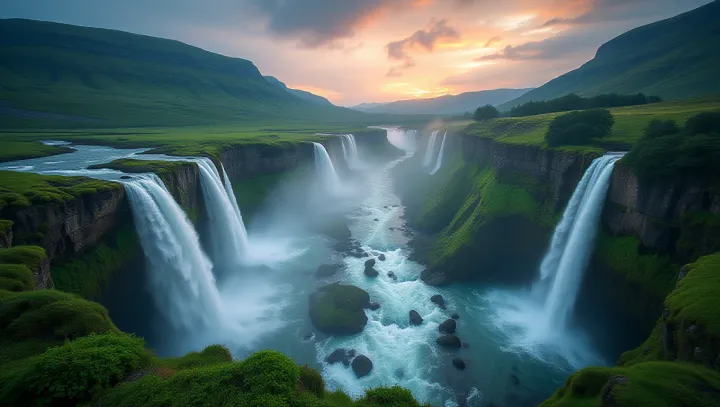Exploring the World's Majestic Waterfalls

Across the globe, from the whispering mists of Iguazu Falls on the Argentina-Brazil border to the grandeur of Victoria Falls between Zambia and Zimbabwe, waterfalls stand as majestic testimonies to nature's raw power and beauty. These natural wonders, often located in remote and pristine settings, provide a profound experience of the planet's geophysical phenomena. Each waterfall tells its own story, shaped by history and geography.
For instance, Angel Falls in Venezuela, plunging over 3,200 feet, holds the title of the world's highest waterfall. On the other hand, Niagara Falls, located on the ticklish border between Canada and the United States, mesmerizes millions of visitors annually with its thunderous roar and cascading beauty. Beyond their aesthetic appeal, these waterfalls play crucial roles in their ecosystems.
The surrounding flora and fauna have adapted uniquely to these environments, creating vibrant biodiverse habitats. For instance, the lush greenery enveloping Seljalandsfoss in Iceland attracts countless species of birds, enhancing its ecological allure. In today's digital age, such natural sites contribute significantly to ecotourism and local economies, drawing nature enthusiasts and adventurers alike.
According to the World Tourism Organization, natural attractions, including waterfalls, constitute one of the fastest-growing sectors in the tourism industry. As more visitors seek sustainable travel experiences, the preservation of these natural wonders becomes paramount. Experts suggest that striking a balance between accessibility and conservation is key to ensuring that future generations can continue to marvel at these breathtaking sites.
The International Union for Conservation of Nature emphasizes the need for protective measures to safeguard these precious ecosystems while accommodating the increasing flow of tourists.
